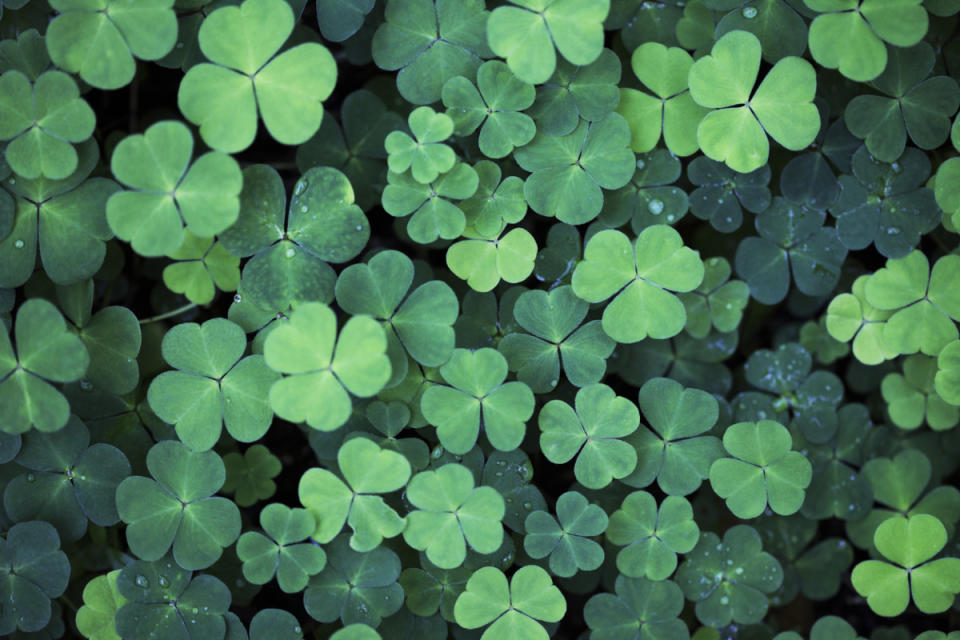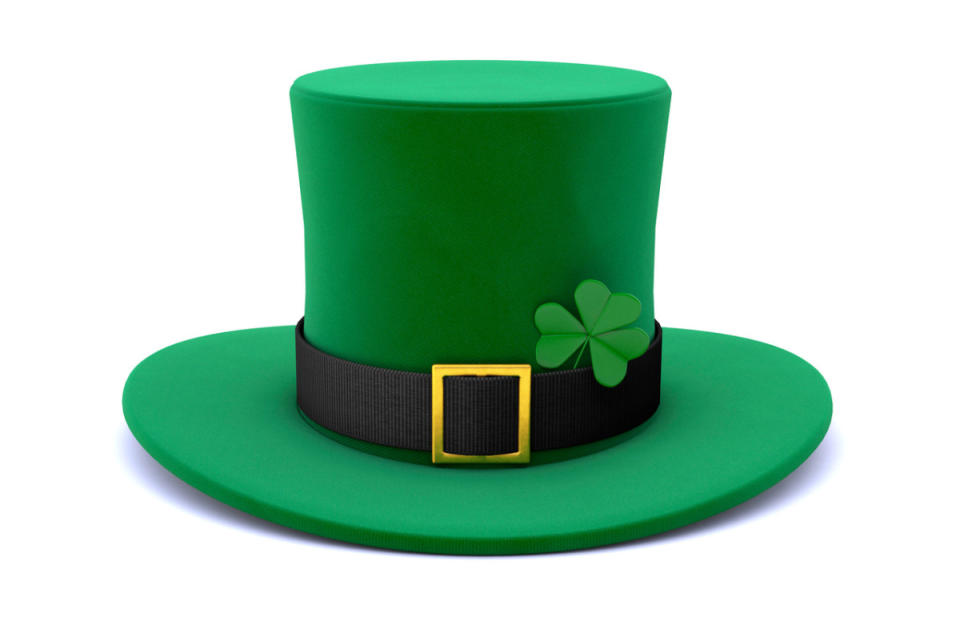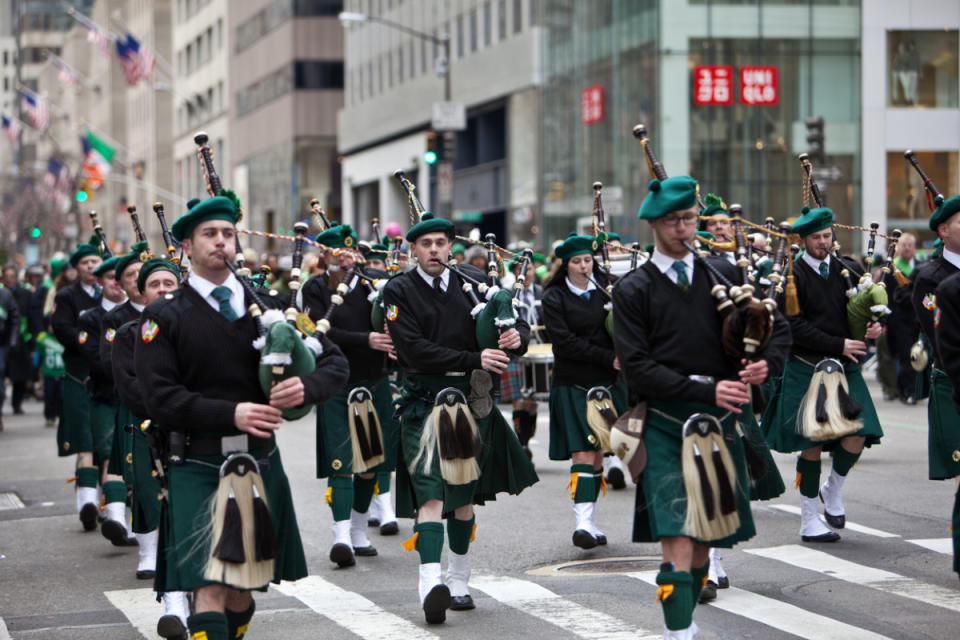17 St. Patrick’s Day Traditions To Help You Celebrate Irish Pride

Bagpipe players in kilts are part of a St. Patrick's Day tradition
St. Patrick's Day isn't just a celebration of the patron saint of Ireland. It's also a demonstration of Irish pride and a welcome bit of green-fueled joy to kick off the spring season and shake off our winter blues. From shamrocks to snacks to step dancing, historically, St. Patrick's Day traditions are widely varied, but one thing's for sure: They're all a lot of fun. Here are 17 St. Patrick's Day traditions in honor of March 17!
Related: Is It 'St. Patty’s Day' or 'St. Paddy’s Day'? Here’s the True Irish Way To Shorten St. Patrick’s Day
St. Patrick's Day Traditions
1. Eating corned beef and cabbage ... and bacon!
Believe it or not, corned beef and cabbage are actually more of an Irish American tradition than an Irish one. Historically, Irish bacon (a form of cured pork) was actually the meat of choice for St. Patrick's Day. It wasn't until the early 1900s that Irish Americans in New York City began to eat corned beef instead because it was much more affordable. Cabbage also became popular simply because it was cheap and readily available.
Related: 50 Best St. Patrick's Day Wishes To Toast Your Friends and Family
2. Rocking shamrocks
Shamrocks are staples of St. Patrick's Day decor and dress. According to Time, clovers and shamrocks were readily available and cheap ways to dress up outfits to go to church, and Irish people began wearing them to services starting in the 1600s. A 1726 treatise from Irish cleric Caleb Threlkeld declared the shamrock the Irish national symbol, writing, “This Plant is worn by the People in their Hats upon the 17. Day of March yearly, (which is called St. Patrick’s Day.)...It being a Current Tradition, that by this Three Leafed Grass, he emblematically set forth to them the Mystery of the Holy Trinity.”
Related: St. Patrick’s Day Jokes

iStock
3. Drowning the shamrock
Wearing shamrocks isn't the only thing we do with them to celebrate St. Patrick's Day. "Drowning the shamrock" is considered good luck (even if it could possibly lead to a headache on March 18). According to some legends, Saint Patrick himself went to a bar and got a glass of whiskey that was partially empty. The saint warned the bartender that the devil comes for the dishonest, at which point he was scared straight: The next time Saint Patrick visited the pub, everyone's whiskey glasses were full. These days, at closing time on St. Patrick's night, shamrocks are dunked into the final glasses of whiskey (or whatever you're imbibing!) as a toast to the man who drove the proverbial snakes out of Ireland.
Related: St. Patrick's Day Activities
We're drowning the shamrock and wetting the shamrock @LindsayF82 @HowellHollywood #HappyStPatricksDay pic.twitter.com/EbgfVJ9B6c
— WALLACE III (@88machinehead) March 18, 2017
4. Enjoying some Guinness
Guinness is always popular in Ireland, but enjoys a special boom in business on St. Patrick's Day stateside: The brand revealed to USA Today that five times more Guinness (3 million versus 600,000) pints are sold on St. Patrick's Day than any other day of the year in the U.S.
Related: It’s Your Lucky Day! Learn All About St. Patrick’s Day: History, Facts, Trivia, and Banning Beer?!
5. Looking for leprechauns
Leprechauns can be traced back a number of ways: Though most clearly linked to sprites and fairies in terms of their magical origins, the term "leprechaun" may come from two different roots: In the 700s, water spirits called "luchorpán" were said to be tiny, as well as "leath bhrogan," Irish for "shoemaker." Some legends claim that you can find a leprechaun if you follow the tap of their cobbler's hammers. All leprechauns are said to be male, which means they really must be the stuff of magic, because, well...

iStock
6. Wearing green
It turns out, leprechauns are supposedly why we wear green on St. Patrick's Day: they allegedly can't see the color green, so they won't be able to see you and pinch you if you're rocking emerald or chartreuse shades.
Related: 100 St. Patrick’s Day Quotes to Channel the Luck of the Irish This March
7. Pinching anyone who isn't wearing green
Pinching, which we should remind you is a form of assault, comes from leprechaun tradition. Please don't use someone not looking festive as an excuse to grab or touch them OK? We're beyond this.
8. Wearing blue
Blue was once closely associated with St. Patrick's Day instead of green. According to Smithsonian, St. Patrick was depicted in imagery as often wearing blue garments, and blue was part of Ireland's very first coat of arms. One of its symbols, a gold harp in front of a blue background, can still be found on the Irish presidential flag and constitution today.
Related: Wait, There’s No Such Thing as a Leprechaun...Is There?
9. Enjoying Irish music
Whether you're into The Dropkick Murphys or traditional Celtic chants, music is a hallmark of St. Patrick's Day celebrations.

iStock
Related: We Have the Best Irish Blessings for St. Patrick’s Day
10. Watching Irish step dancing
Riverdance, anyone?
11. Church services honoring St. Patrick
At its core, St. Patrick's Day is a religious holiday honoring Ireland's patron saint, so many Catholics (especially, of course, Irish Catholics) mark the occasion by going to mass.
Related: St. Patrick's Day Memes
12. Dyeing the Chicago River green
Since 1962, Chicago has dyed its namesake river green every St. Patrick's Day. The use of green dye started with a utilitarian purpose: City workers originally used green dye to trace unauthorized sewages, then realized it looks very festive!
Related: Color Us Surprised! Learn Exactly How the Chicago River Turns Green for St. Patrick's Day
13. The whole "kiss me, I'm Irish" thing
The phrase "Kiss me, I'm Irish" comes from the Blarney Stone. Irish legend says that kissing the famous stone in Blarney Castle gives the kisser the gift of charming, eloquent and persuasive speech. Since most people won't get to smooch the stone, it's said that puckering up to an Irish person is the next best thing.
14. Irish pride and St. Patrick's Day parades
Whether or not you're Irish, St. Patrick's Day and Irish pride parades are a rollicking great time every year. New York City's St. Patrick's Day Parade is one of the most famous: In a typical year, it has an average of 150,000 participants and 3 million spectators on the sidelines. Cities including Boston, Chicago, and Philadelphia also host parades. St. Patrick's Day is also quite popular in Japan, which hosts parades of its own in the Harajuku neighborhood of Tokyo, complete with Irish dancing.
I'm in Tokyo, Japan for St. Patrick's Day 2019, where they go all out on both sides of Omotesando Avenue in Harajuku. It's a party to celebrate Ireland on an island as far from Ireland as it's possible to be. #Tokyo #東京 #StPatricksDay #セントパトリックスデー #GlobalGreening pic.twitter.com/xP7lXDVHZP
— Cahir O’Doherty (@randomirish) March 17, 2019
15. Using Irish slang and phrases
There's never a better day to yell "Erin go bragh" ("Ireland forever") or "Slainte" ("health," used as a toast).
16. Snacking on soda bread
Irish soda bread may not be Irish after all: Indigenous peoples may have made it first! In any case, the delicious and filling treat became popular with Irish Americans because it's as affordable as it is satisfying.
Related: 50 St. Patrick’s Day Recipes That Will Bring the Luck of the Irish To Your Dinner Table

17. Staying sober
Yep, you read that right. Being that St. Patrick's Day is technically a religious holiday that falls within Lent, it's common for a lot of Catholic celebrants to make this holiday a dry one.
Next, test your knowledge with St. Patrick's Day trivia!
